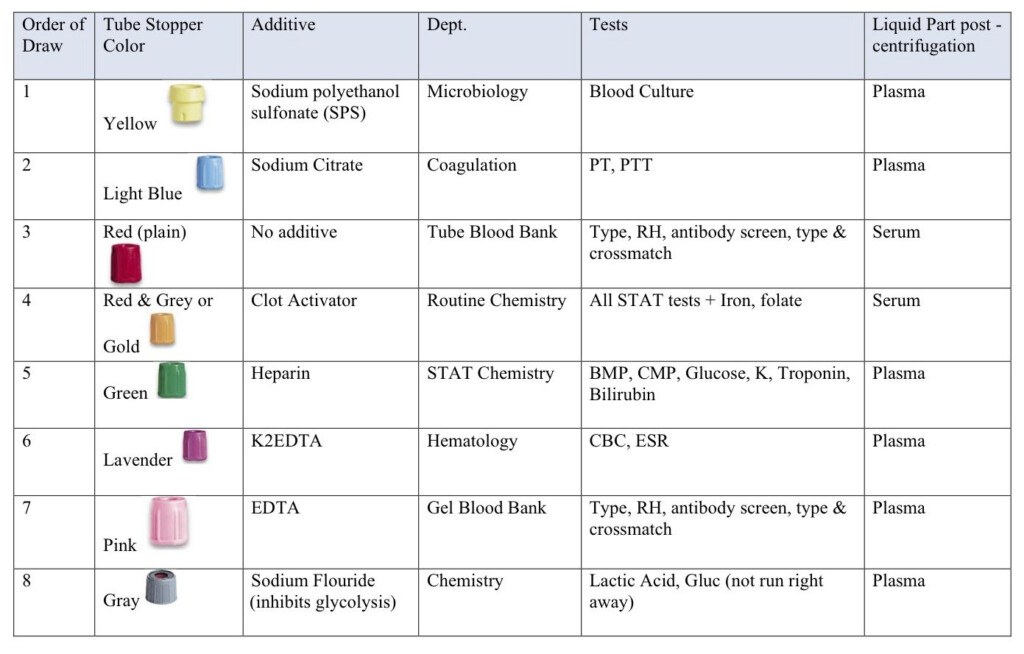When you go for a blood test, you may notice that different tubes are used to collect different types of samples. Each tube is color-coded to indicate the type of test it is meant for. Understanding the color coding can help you decipher which tests are being conducted on your blood sample.
The most common colors used for blood test tubes are:
Blood Test And Tube Color Chart
- Red: These tubes typically contain no anticoagulant and are used for tests that require serum, such as blood glucose or cholesterol levels.
- Blue: These tubes contain an anticoagulant called sodium citrate and are used for coagulation tests, such as prothrombin time (PT) and activated partial thromboplastin time (aPTT).
- Green: These tubes contain heparin or lithium heparin and are used for tests that require plasma, such as electrolyte levels or kidney function tests.
Interpreting the Color Chart
It is important to note that the color coding of blood test tubes may vary depending on the laboratory or healthcare facility. However, a general guideline for interpreting the color chart is as follows:
- Red: Serum tubes
- Gold or Tiger Top: Serum separator tubes
- Light Blue: Coagulation tubes
- Green: Plasma tubes
- Lavender: EDTA tubes for complete blood count (CBC)
By familiarizing yourself with the color chart, you can have a better understanding of the tests being conducted and ensure accurate results.
